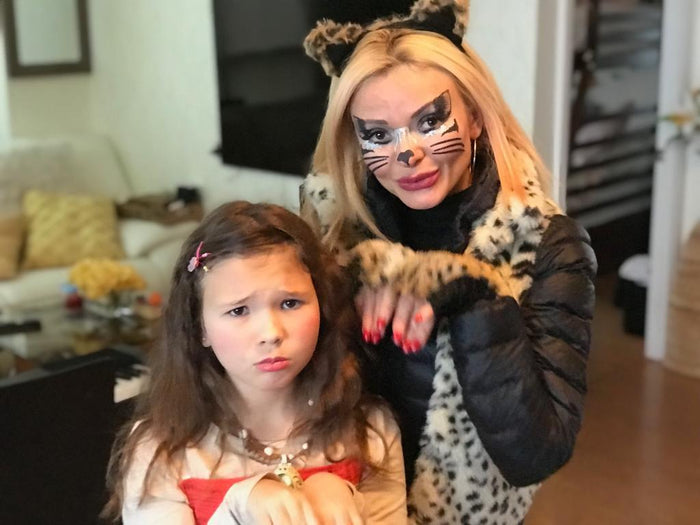Summer is the time when kids build memories. And kids will look back at vacations, day trips, picnics and other outings with nostalgia. But that's not all they'll remember. They'll remember the bad (e.g., being bored at home, fights with siblings). And so as parents we want to help them make every day in summer something they'll want to remember.
And while these everyday summer activities may not necessarily inspire idyllic childhood memories of summer, they will happily fill those long summer days spent at home. Work-at-home parents, in particular, need ideas for enjoyable summer activities that school-age kids can do on their own.
Of course, parents also will want to add in more special activities, like vacations, summer camp or these free summer fun ideas to build those fond memories.

When you're working at home, playing outside is probably not the first activity that comes to mind. Supervising outdoor play can take time out of your workday. But kids that are cooped up inside all day only get rowdier and rowdier. Spending a little outdoor time with them can allow them to blow off some steam and nap later. When they are a little older and nap time is a thing of the past, you may be able to watch from a window while they play outside. So, work some of these 5 outdoor activities for kids into your routine.

Art, much like getting outside, can feel counterproductive to getting things done. It's messy and can use supervision. Setting up an art space — with paper, coloring books, glue, scissors, colored pencils, and crayons are all readily available — will encourage kids to make art part of their daily routine, while making it easier to clean up. But even if you have an art space, you might have to provide some inspiration in the way of ideas and easy summer craft projects.

Typically, kids get new toys during the holiday season, right in the middle of the school year when they often don't have time to play with them. By the time summer rolls around, they are forgotten or, worse, broken. But if you choose your children's toys wisely this does not have to be the case. Toys can provide lasting enjoyment all summer.

Good old-fashioned board games and cards can keep kids busy while you work. Of course, for some games, you'll need to have more than one kid in the house to play. However, there are some games for one and brainteaser games that can keep one child occupied this summer, and you'd be amazed at how many things a kid can do with a deck of cards. If your kids are old enough to play outside unattended, don't overlook outdoor fun like shooting a game of HORSE at the driveway basketball hoop or sending them out to play tag.

Reading for enjoyment every day is a great habit to teach your kids. And summer — without the fatigue of homework and school activities — is the time to instill the reading bug. Summer reading is an activity that's good for just one kid.
Join the local library summer reading club. Try wordless books for new or struggling readers. Buy comics or magazines for your kids. Setting aside a certain time every day for reading helps get kids in the habit. Join a summer reading program or start your own.

Audiobooks and podcasts are for more than just summer car trips. Listening to audiobooks promotes a love of literature while keeping kids engaged for hours, and it's easier for some kids than reading a book.
Today it is easier than ever to download books to a phone, tablet or computer, but you can still do it the old-fashioned way and bring CDs home from the library. And don't forget about podcasts, which are even easier to access than audiobooks.

Spending 15 minutes a day writing (or drawing) in a journal will give your child a head start on the old back-to-school question: What did you do on your summer vacation? Writing in a journal will not keep a child occupied for long periods while you work, but it's a good way to start the day or transition from one activity to another.

All summer long, have a jigsaw puzzle going somewhere in the house. And keep puzzle books handy. Puzzles keep kids mentally active. Some kids are more into puzzles than others. Don't expect them to spend hours working on puzzles in a day. Doing only a little bit of a large puzzle each day or completing a 100-puzzle piece puzzle all at once keeps kids from getting bored with it.
Of course, there are puzzle apps and computer games as well, but, as with all electronics, parents need to keep an eye on the clock to be sure kids don't get too much screen time.

If your child's school gives summer homework or summer reading, have your child work on it a little each day or each week. You'll both be happy it's finished at the end of summer when you're rushing around getting ready for back to school. Keep an eye on your child's progress, but don't give too much homework help. Working on it a little each day teaches your child how to manage long-term projects. The homework becomes an everyday summer activity rather than a monumental end-of-summer task. The purpose of summer homework is to keep kids' skills sharp, so waiting until the end of summer may mean re-learning forgotten skills. Make a plan for summer homework early in the summer, and stick to it.
References: Laureen Miles Brunelli and Sean Blackburn



















